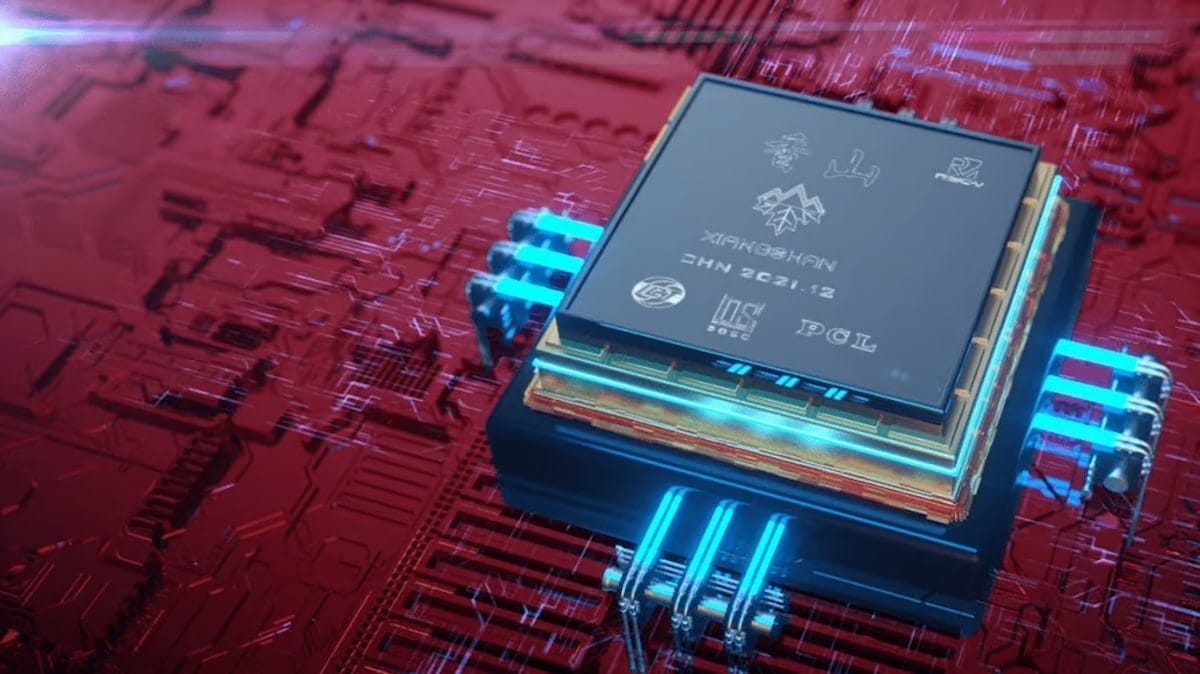China strengthens its technological strategy with the new XuanTie C930 processor, a RISC-V-based CPU designed by Alibaba. This advancement represents a crucial step in reducing its reliance on Western technologies amid restrictions imposed by the United States.
RISC-V: The Open Alternative Challenging Intel and ARM
The RISC-V architecture has emerged as an open-source alternative to the x86-64 processors from Intel and AMD, as well as ARM architecture chips, which are widely used in mobile devices and servers. For China, this technology represents a strategic opportunity for the development of supercomputers and data centers without the limitations imposed by U.S. sanctions.
In this context, tech giants like Tencent, Alibaba, and the Chinese Academy of Sciences have intensified their efforts in developing RISC-V-based chips. In Europe, similar initiatives have led to the development of the European Processor ACcelerator (EPAC), the first European RISC-V processor designed for integration into supercomputers.
The XuanTie C930: The Key to China’s Strategy
The XuanTie C930 processor, developed by Damo Academy, Alibaba’s research division, is a high-performance chip aimed at applications such as data center servers and autonomous vehicles. The company confirmed that it will begin distributing this processor in March but did not specify how many units will be available initially.
The significance of this launch lies in the fact that China is seeking alternatives to chips from companies like Intel, AMD, and NVIDIA, whose access has been restricted due to U.S. regulations. In this regard, Ni Guangnan, an academic at the Chinese Academy of Engineering, emphasized that this processor “will help build an inclusive and collaborative global RISC-V ecosystem, becoming a disruptive force in the semiconductor industry”.
Analyses from Guotai Junan Securities reinforce this view, noting that “RISC-V has the potential to challenge the dominance of proprietary architectures, just as DeepSeek has challenged OpenAI’s monopoly with its high-performance open-source AI models”.
Alibaba and Its Push for the RISC-V Ecosystem
The C930 has achieved a score of over 15 points per gigahertz in SPECint2006 tests, a benchmark that measures CPU performance, making it a viable option for high-performance computing applications. Furthermore, Alibaba has indicated that its integrated circuit design team has participated in the development of more than 30% of high-performance RISC-V processors.
The company has previously developed other RISC-V chips within its XuanTie series, including the C920 (2023) and C910 (2019) models. New variants such as the C908X, R908A, and XL200, optimized for AI acceleration, automotive applications, and high-speed connectivity, will be added to this lineup.
China Doubles Down on RISC-V
As RISC-V processors gain traction in high-end devices, China plans to issue guidelines to promote the use of these chips nationwide, according to a report from Reuters. This initiative, which could be announced this month, reinforces the Chinese government’s strategy to move toward technological self-sufficiency in semiconductors.
It is estimated that, globally, shipments of RISC-V chips will reach 16.2 billion units by 2030, with a market value of $92.7 billion, according to data from SHD Group.
With these advancements, China continues to strengthen its position in the semiconductor industry, using RISC-V as a key tool to navigate the technological restrictions imposed by the West.

